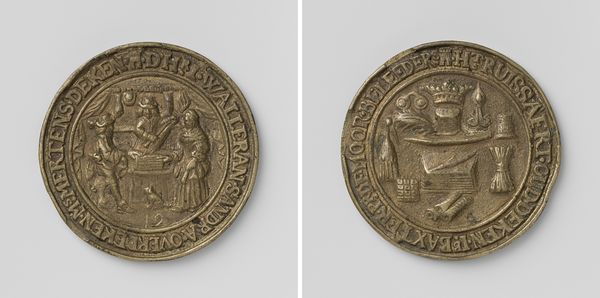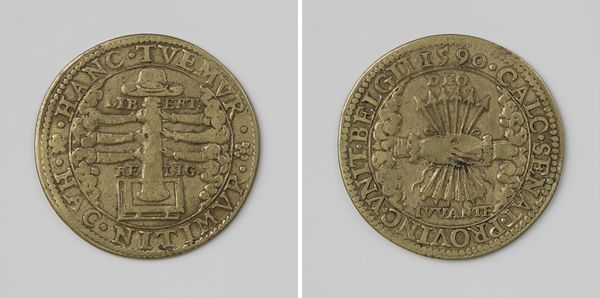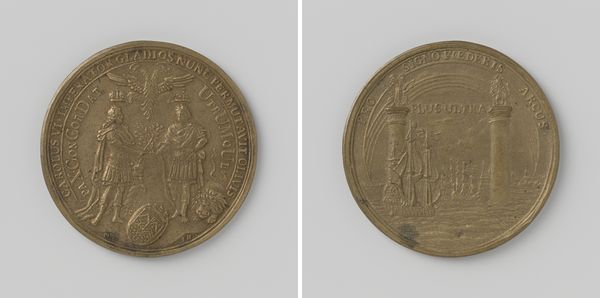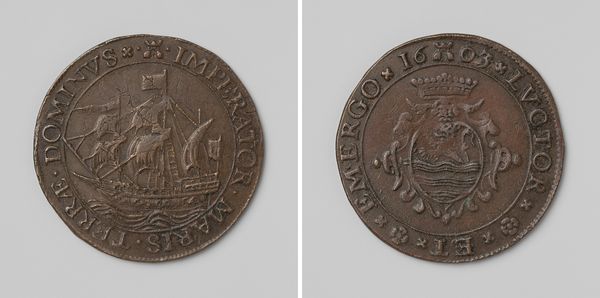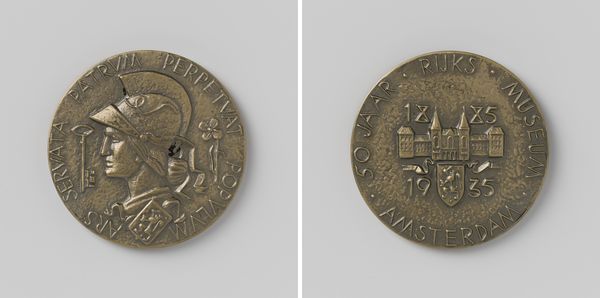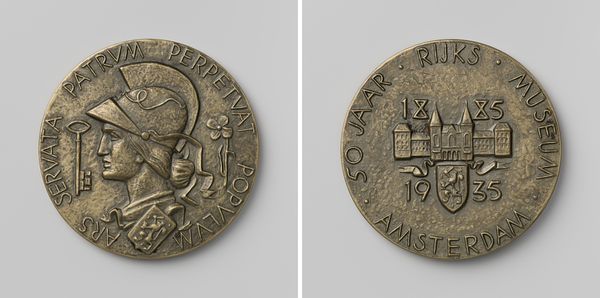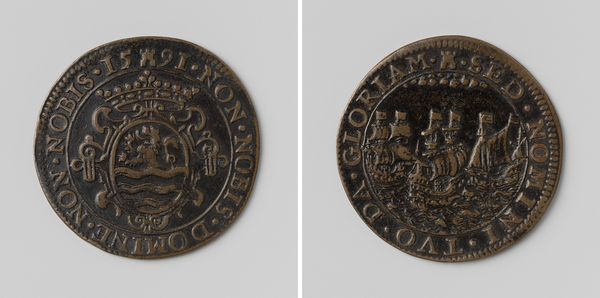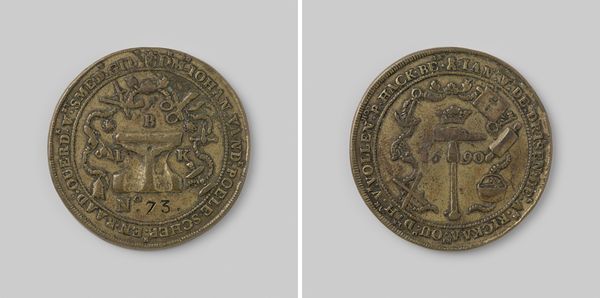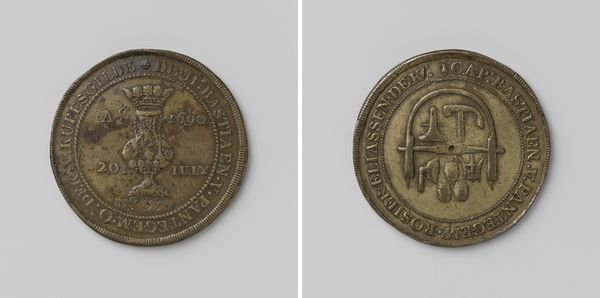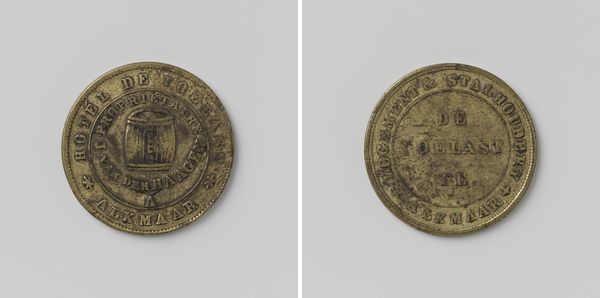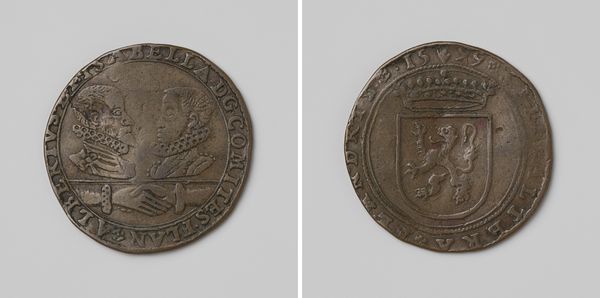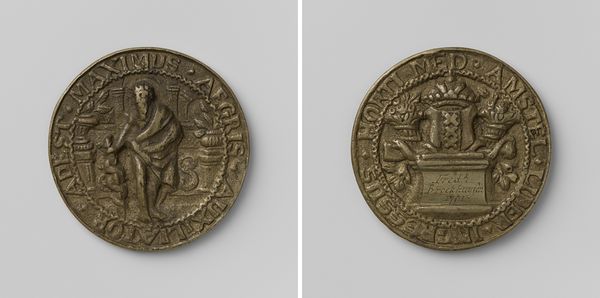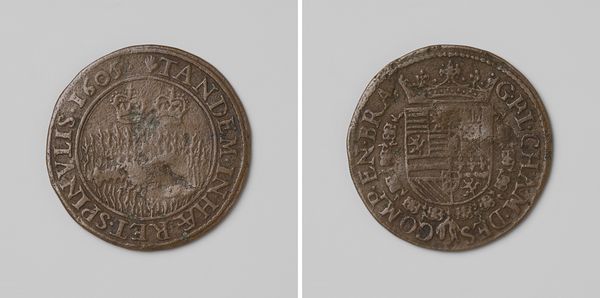
relief, bronze
#
portrait
#
high-renaissance
#
medieval
#
relief
#
bronze
#
11_renaissance
#
history-painting
Dimensions: diameter 4.4 cm, weight 13.70 gr
Copyright: Rijks Museum: Open Domain
This gold coin was made by Ulrich Gebhart, likely in the late 15th or early 16th century. It portrays Holy Roman Emperor Frederick III and his son Maximilian. Coins like these were essentially made in two ways. First, an artisan would create a positive model in wax or clay. Then, this would be pressed into fine sand to make a mould. Molten gold or silver, heated in a crucible using bellows, would then be poured in. When cooled and released, each coin would be individually chased – that is, details would be sharpened by hand using small tools. Consider the number of skilled hours required for this process. Although coins were crucial to the functioning of a mercantile economy, they were also potent symbols of wealth and power, circulated among elites. By thinking about these layers of production and meaning, we can see how seemingly simple objects participate in larger social and political systems.
Comments
No comments
Be the first to comment and join the conversation on the ultimate creative platform.
